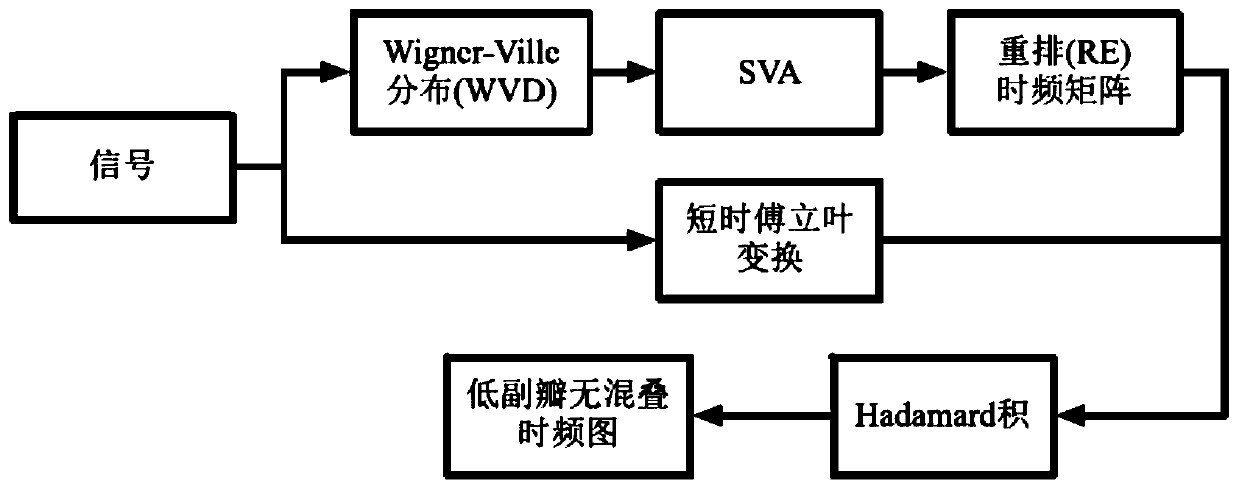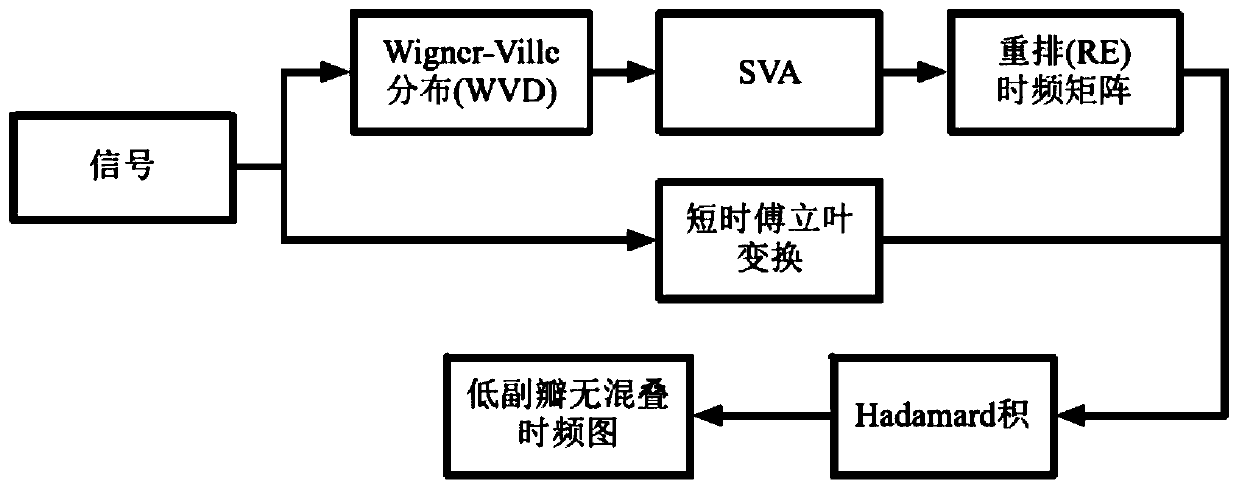A method of analyzing linear frequency modulated signal
A linear frequency modulation and signal technology, applied in special data processing applications, complex mathematical operations, instruments, etc., can solve the problems of WVD aliasing, difficulty in resampling, and difficulty in accurately extracting signal information, and achieve high time-frequency resolution. Effect
- Summary
- Abstract
- Description
- Claims
- Application Information
AI Technical Summary
Problems solved by technology
Method used
Image
Examples
Embodiment Construction
[0031] It should be noted that components in the various figures may be shown exaggerated for the purpose of illustration and are not necessarily true to scale. In the various figures, identical or functionally identical components are assigned the same reference symbols.
[0032] In the present invention, each embodiment is only intended to illustrate the solutions of the present invention, and should not be construed as limiting.
[0033] In the present invention, unless otherwise specified, the quantifiers "a" and "an" do not exclude the scene of multiple elements.
[0034] It should also be pointed out here that in the embodiments of the present invention, for the sake of clarity and simplicity, only a part of parts or components may be shown, but those skilled in the art can understand that under the teaching of the present invention, specific The scene needs to add the required parts or components.
[0035] It should also be pointed out that within the scope of the pre...
PUM
 Login to View More
Login to View More Abstract
Description
Claims
Application Information
 Login to View More
Login to View More - R&D
- Intellectual Property
- Life Sciences
- Materials
- Tech Scout
- Unparalleled Data Quality
- Higher Quality Content
- 60% Fewer Hallucinations
Browse by: Latest US Patents, China's latest patents, Technical Efficacy Thesaurus, Application Domain, Technology Topic, Popular Technical Reports.
© 2025 PatSnap. All rights reserved.Legal|Privacy policy|Modern Slavery Act Transparency Statement|Sitemap|About US| Contact US: help@patsnap.com



